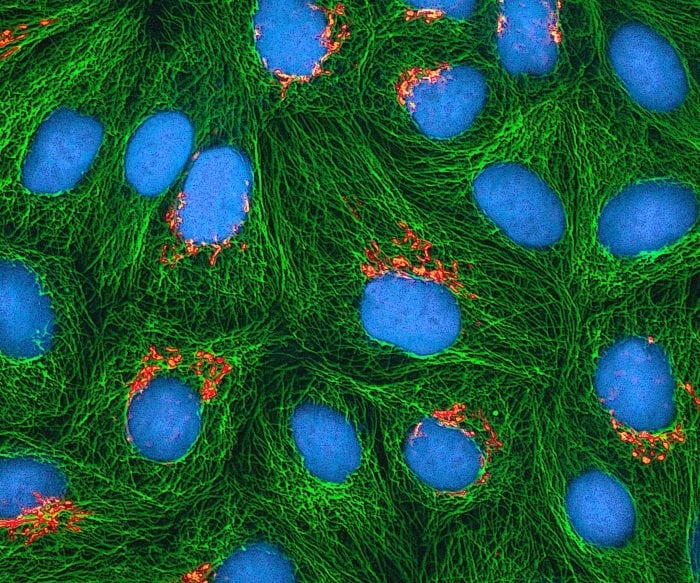
Most current anti-cancer drugs are not very specific for killing cancer cells. They preferentially kill cancer cells because they kill fast-growing cells, and cancer cells usually grow faster than normal cells. Unfortunately, many normal cells also grow fast and they are also killed by these drugs. As a result, chemotherapy is usually accompanied by undesirable side effects.
We have identified a new class of anti-cancer drugs whose toxic effects are activated by two enzymes that are more abundant in some cancer cells, providing specificity in treating these cancers. This discovery was triggered by several reports which refuted the generally assumed mechanism of an anti-cancer drug called 2-deoxyglucose (2DG). 2DG is a glucose-like molecule but cannot be metabolized for energy use. Since cancer cells are much more dependent on glucose for their energy consumption than normal cells, it was thought that 2DG kills cancer cells by starving them of the much-needed glucose. However, it was pointed out that 2DG is not very effective in blocking glucose usage, and a more effective inhibitor of glucose metabolism actually does not kill cancer cells. The anti-cancer effect of 2DG is rather modest. It is being used to augment other chemotherapies and radiotherapies. However, its cancer-specific toxicity is intriguing. Understanding the true mechanism of its anti-cancer effect might lead to the development of better anti-cancer drugs.
Earlier we and others found that there are high levels of two closely related enzymes called AKR1B1 and AKR1B10 (AKR1s) in several types of cancer cells including liver, lung, and breast cancers. On the other hand, we also found that AKR1B1 is the cause of 2DG-induced oxidative stress in heart cells. Putting the two together, we proposed that the cancer-specific toxicity of 2DG might be due to increased oxidative stress that is activated by AKR1s.
AKR1s’ favorite substrates are the aldehydes. Similar to glucose, a very small fraction of 2DG exist in the aldehyde form and become a substrate for the AKR1s. When the AKR1s act on their substrates they require a co-factor called NADPH. NADPH is also a co-factor for several other enzymes, including glutathione reductase (GR). GR is a very important enzyme for cells’ defense against oxidative damages because it regenerates the most important cellular antioxidant glutathione (GSH). In the presence of their substrates, AKR1s effectively compete with GR for their common co-factor NADPH. As a result, GR is unable to regenerate GSH, leaving the cells vulnerable to oxidative damages. We proposed that 2DG kill cancer cells not because it starves the cancer cells of glucose but because it serves as a substrate for AKR1s, leading to the depletion of GSH and oxidative stress.
This proposed mechanism was proven correct by several experiments. (1) Cells with higher levels of AKR1s were more sensitive to 2DG. (2) Reducing the activities of AKR1s protected the cells against the toxic effects of 2DG. (3) Increasing the activities of AKR1s made the cells more susceptible to the toxicity of 2DG. (4) Killing of cells by 2DG was accompanied by depletion of GSH. (5) Increasing the cellular level of GSH protected the cells against 2DG, and conversely, reducing the cellular level of GSH exacerbated the 2DG toxicity. (6) Better substrates of 2DG were more efficient in killing cancer cells with high level of AKR1s, and the toxic effect of these AKR1s substrates was also accompanied by depletion of GSH.
The mechanism we proposed predicts that better substrates for AKR1s would be more effective in killing cancer cells with high level of these enzymes. We have tested two of them, diacetyl and glyceraldehyde. They are better substrates for the AKR1s than 2DG, and they were shown to be more effective than 2DG in killing cancer cells. They represent a new class of anti-cancer drugs. Since the 3D structures and the active sites of the AKR1s are known, even better substrates can be designed to serve as anti-cancer drugs. This paves the way for the development of anti-cancer drugs specific for cancers with a high level of AKR1s. These cancers can be identified by screening biopsies samples.
These findings are described in the article entitled Aldo-keto reductases-mediated cytotoxicity of 2-deoxyglucose: A novel anticancer mechanism, recently published in the journal Cancer Science. This work was conducted by Shi‐Qing Zhang and Sum-Man Stephen Chung from Beijing Normal University Hong Kong Baptist University United International College, Kin‐Lam Ken Yung from Hong Kong Baptist University, and Sookja Kim Chung from the University of Hong Kong.









